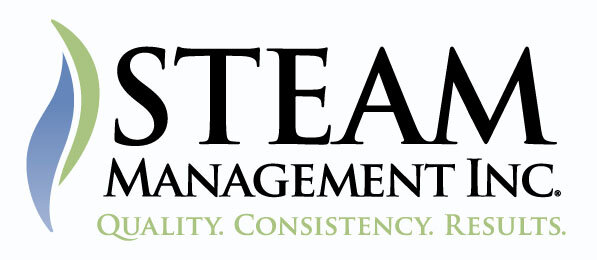
White Paper
Condensate Return Analysis
Background:
Objective: Identify system deficiencies and develop scope opportunities to improve condensate return to the Energy Center.
The analysis focused on examination of:
UTILITY DATA
STEAM TRAPS
AHU DRIP LEG CONFIGURATION
FLASH TANK SYSTEMS
CONDENSATE LIFTS IN LOWER MRs
UTILITY DATA ANALYSIS
The utility data was reviewed and benchmarked against heating degree days to determine loss trends and boiler make up water demands through the course of the heating season.
Analysis of the data showed a direct correlation between returned condensate vs. the heating load of the facility. As the heating demand of the facility increases, the amount of boiler makeup required (condensate losses) increases. This indicates the primary source of losses can be attributed to the HVAC equipment responsible for heating building space in the facility. This is in line with the high failure rate of steam traps found throughout the facility on air handlers, drip legs, and unit heaters.
The method of calculating condensate losses through metered steam and water data has a margin of error greater than calculating losses with chemical testing methods. An example is when the heating degree days approach zero during the months of August and September the condensate return is 98% or better. This is unreasonable as losses attributed to the sterilizers and flash steam should be about 10 – 15% of the overall steam production.
The data indicates that there is a trend of condensate loss primarily during the heating months.
STEAM TRAPS
Steam traps on air handlers, heat exchangers, humidifiers, horizontal unit heaters, and drip traps were tested with ultrasound and infrared to determine functionality. Steam trap piping configurations for condensate return were analyzed for each location.
For each AHU coil, the existing steam trap capacities were reviewed and compared against the steam demand.
Condensate piping on AHU’s in upper mechanical rooms appeared adequate with 6” – 16” of elevation drop from the bottom of each coil to the top of each trap. Condensate piping downstream of each trap falls through the floor dropping another 5’ – 10’ before dumping into the vertical condensate return stack. Each stack leads to the condensate collection system in the lower level mechanical rooms.
Lower level mechanical room AHU’s are designed with a 12’ – 14’ lift on condensate piping downstream from each steam trap. Some of these AHU’s have had the condensate return piping modified with return pumps installed to pump the condensate up the lift.
A failure rate of 53% for the steam traps associated with the air handlers resulted in financial losses of $64,494 annually due to failed steam traps.
AHU DRIP LEG CONFIGURATION
In several locations, drip traps are piped from the strainer blow down just before each AHU control valve. Strainer blowdowns are designed to trap and remove debris from the system. The current configuration does not allow for debris removal resulting in debris accumulating in the traps or being reintroduced into the condensate return system.
In some locations, the strainer blow-down is being used as a drip leg for the steam trap, making the drip trap’s function impractical and the strainer blowdown port ineffective.
This piping configuration exists on approximately 50% of the existing AHU steam supplies. A drip trap piped into the condensate return piping of the air handlers’ coil can cause a potential for backpressure, water logging and freezing.
FLASH TANK SYSTEMS
The condensate and flash tank collection systems were not separated by mechanical means. Instead, they share the same vent and connection by open piping for condensate flow. This allows live steam to travel into the condensate return pump causing premature pump failures.
These systems should work together but be piped independently from one another. The flash tank is in place to allow space for condensate to flash into steam or vent steam to the outside as needed. The condensate return tank and pumps are in place to collect and pump condensate back to the Energy Center. Separating the flash tank from the condensate return tank and pump through a mechanical device (steam trap) will protect the condensate return pumps in the event of trap failures elsewhere in the system, extending the condensate pumps.
CONDENSATE LIFTS IN LOWER MR
HVAC equipment in the lower level mechanical spaces discharged condensate into overhead condensate return mains located 12’ – 14’ above the elevation of AHU steam traps.
The backpressure (head) created as a result of the lift decreased the pressure differential across the steam trap, reducing capacity and efficiency of the heating coil.
The site has installed local condensate return pumps to eliminate backpressure.
Pumping instead of “pushing” the condensate overhead increases efficiency of the equipment, prevents coil damage due to freezing, and improves overall condensate return capacity.
CONCLUSION
Steam Management utilized the completed analysis to develop bid-ready scope documents, drawings and equipment schedules for MEP review and public bid.
If your facility is looking to complete an analysis or would like to discuss our solution based services, contact us today at (800) 731-0131 ext. 701 | info@steammgt.com.
Supporting Documents:
